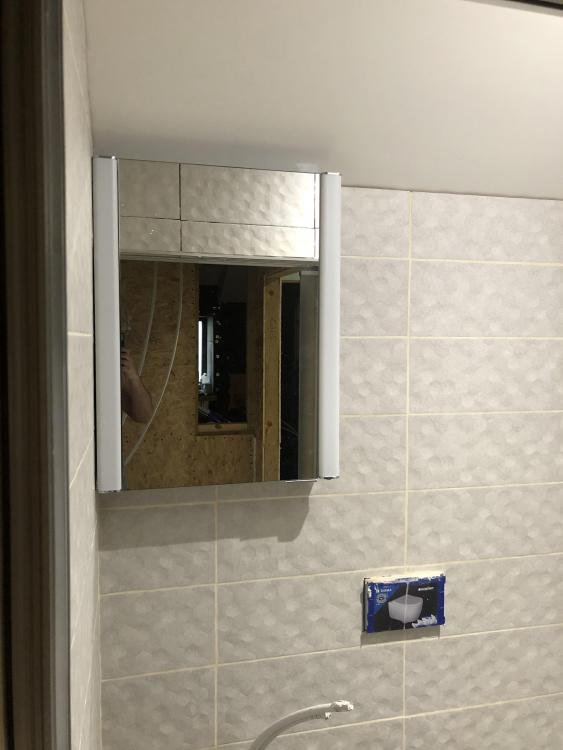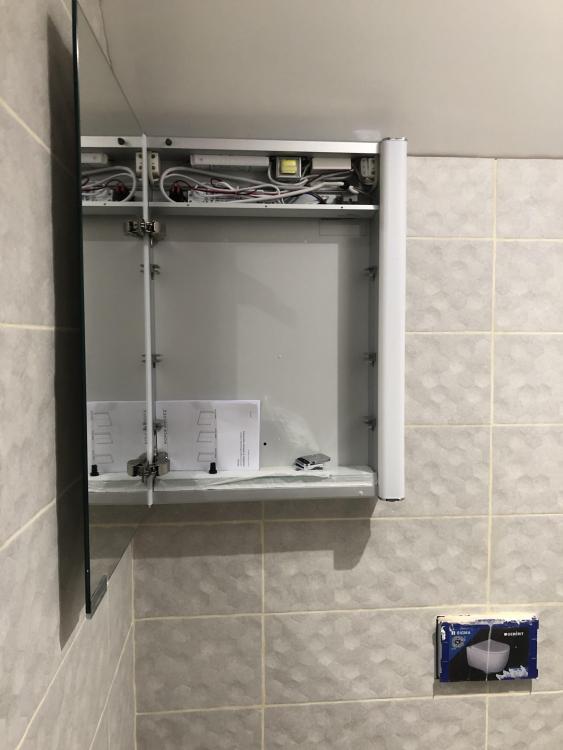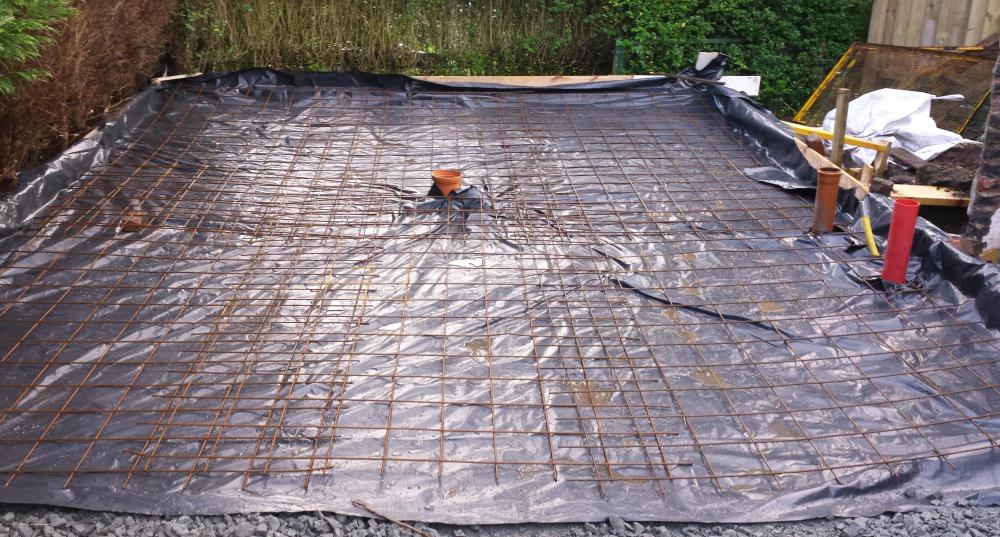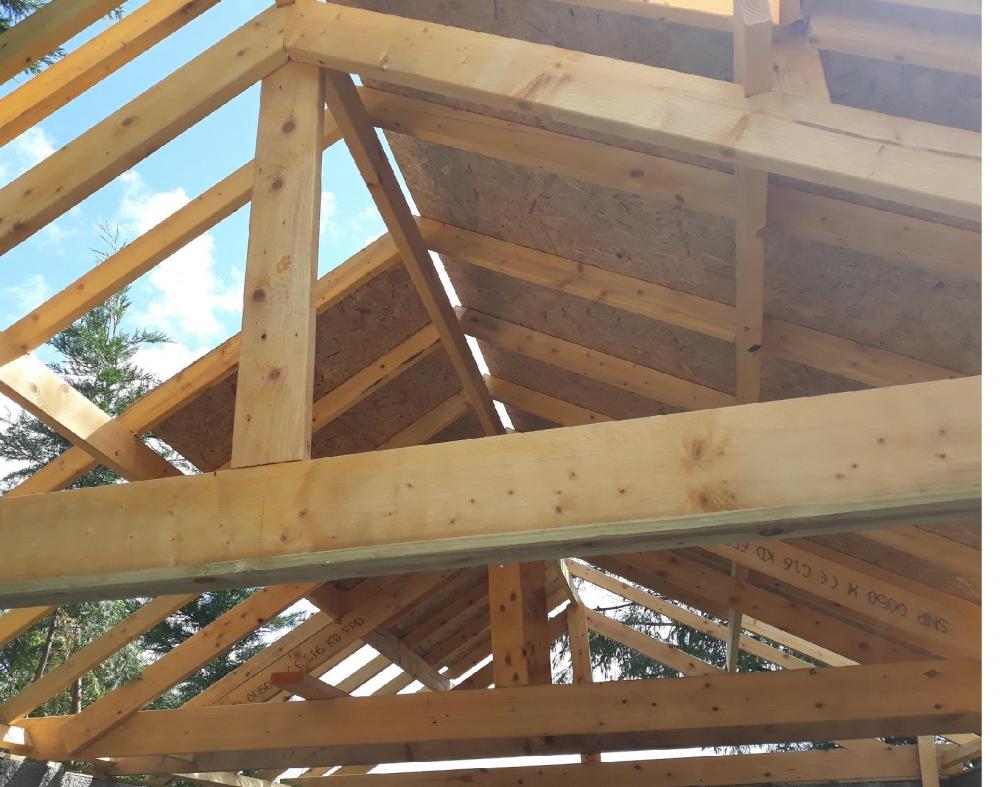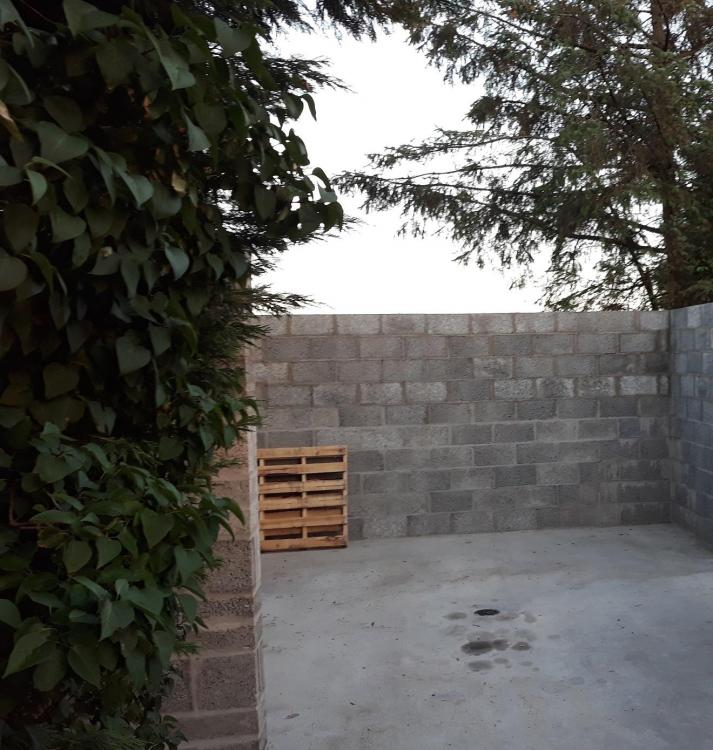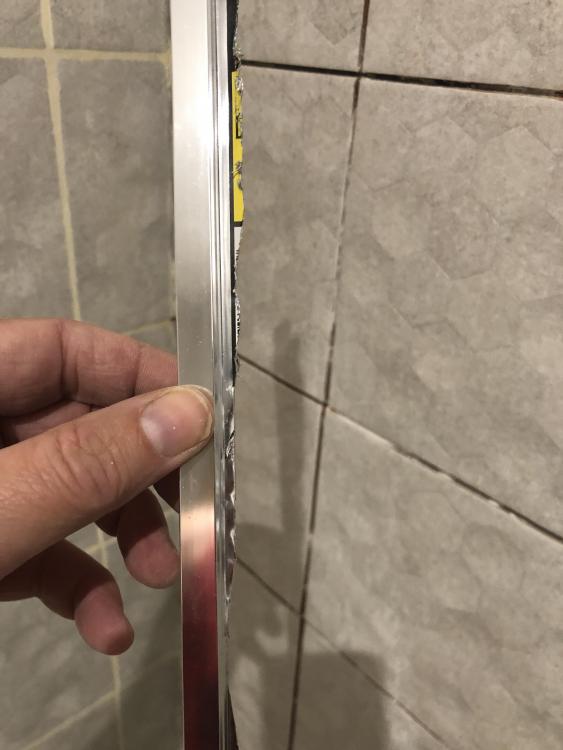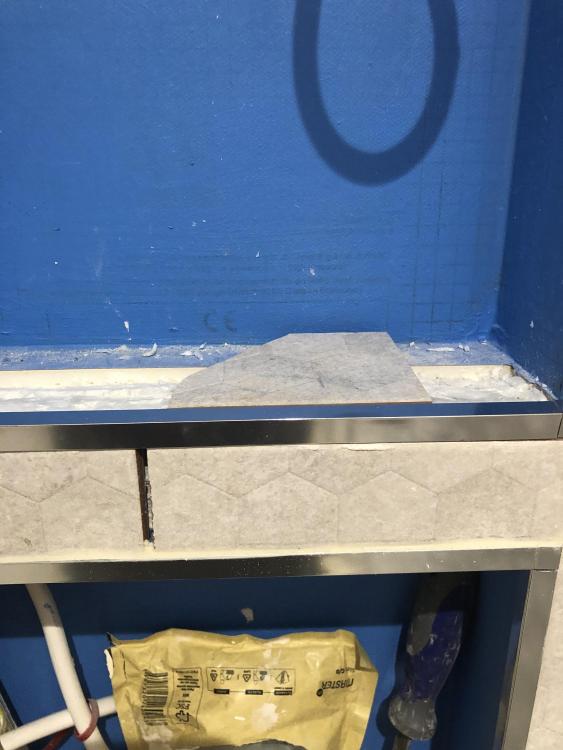Leaderboard
Popular Content
Showing content with the highest reputation on 10/09/20 in all areas
-
Windows have provided (by far) the most stress on our build. Some our own fault - missed a typo on the schedule & had to order a replacement, some as a result of lying, dishonest, fitters who didn’t want to finish the job. In the unlikely event of ever doing this again I will go over the schedule again & again with a fine tooth comb & insist on references from domestic customers for the fitters.3 points
-
Wasn't specifically talking about that case, just in general. I've never really met a window fitter who takes pride in their work. Seems to be a rough trade then you get the firms expert come to fix up or adjust any issues.2 points
-
You didn’t have the best of experiences Nick and I hold my hands up to that and I apologise. As you know, install team are well gone but to much “faith/trust” was given to them. They let me down, which meant I let you down on numerous occasions. I also let myself down. It will never happen again. It doesn’t always go perfect and when it does go wrong it can go wrong spectacularly. I hope I put things right to a degree, took time to resolve things that’s for sure.2 points
-
Yeah... I am due to get kicked out into it shortly 'come what may'... it's absence from the garden doesn't seem to be a blocker to this eviction. The bifolds are intended to open outwards - 550 config so one 'access' door which can just be opened. We want the outside space to 'come into the inside space' / be able to use it all like one space for parties etc. Tuin log cabins do look good... which I has found them sooner as it might have stopped me going down the SIP rabbit hole.1 point
-
No need to apologise, you win some you lose some. When it’s fair it’s fair. When they (other suppliers) “buy” themselves the work, there isn’t much that can be done. I wish you well with the project and here if you need any help/advice.1 point
-
fair enough @craig. I think Internorm really wanted the job so they cut their prices drastically. I did get another Internorm quote from a different reseller and their quote was substantially more than the Gaulhofer quote. I apologise if I gave an unfair judgement to the quote you gave us but it really does just show how much variance there is in window quotes depending on the job, the retailer and the manufacturer.1 point
-
it's weird isn't it how the same manufacturers can be so different with quotes for different people. for us Ideal Combi were at the cheaper end of all our quotes and Gaulhoffer were more expensive that Internorm! we ended up choosing Norrsken, good price, service and quality of windows and doors. this all comes with the usual caveat that we've not had anything delivered or installed yet so my opinion could change.1 point
-
Careful what you wish for. I heard his tackle has a tendency to slip out unexpectedly from where it's meant to be. (He then posts pictures of the mess he's made).1 point
-
Same as the rainwater harvesting calculator Plan roof area x 0.05 gives you cubic metres / hour so mine would be 3.85 cuM/H at 77 square metres1 point
-
1 point
-
1 point
-
A bit here. Flickr down at the mo so can't access the pics I wanted. Basically I sat the bottom tile on a plastic packer at the back to just tilt it forward a little. The adhesive only squashes down so far.1 point
-
Don't have too much fall on those bottom tiles. I have 3 recesses, 2 deeper ones on one wall and a shallower one driven by the need to get at least some pir in the wall behind it. I think where the shallow pocket is there's only 25mm pir behind. I made a jig so in theory all pocket bottom tiles ended up at the same angle but with the shallow one stuff can slip off potentially. Maybe I got the angle wrong? I'll find some pics.1 point
-
I paid 80p a block for a bale of 36 I ordered about 4 weeks ago on top of an order for other bits to top up my block stock for little bits of wall etc. Just tried to buy 2 there and they wanted £1.68 inc the vat for the 2. Maybe we are spoilt as there is a block factory about 3 miles away. I think the issue is supply and demand. Thistle multifinish was £12 a bag at one point but I see it is back down to £5.85 a bag in B&Q which means I could get it from the merchant for probably more like £5.001 point
-
How about fit it into the face of the flat panel ..?? Extract doesn’t need to be an extractor, and you could put a slot extract above the beam linked to a high power fan mounted in the roof space. That would mean you have a discrete extraction that doesn’t look like an extractor and is done at reasonable cost. This is the sort of thing I’m thinking https://www.troxuk.co.uk/downloads/385b17d652ec5b84/00266311_0.pdf?type=product_info1 point
-
I think a rethink of the kitchen layout might be in order. treat the problem as a whole. You know you need an extractor above the hob, so perhaps the hob is not in the best place? Another solution might be to centre the extractor slightly to the right of the beam, that will make dropping the duct down to it easier, and then just frame in a little bit of the vaulted ceiling so a bit more of it is flat to accommodate the hood and a little bit less is open all the way to the roof?1 point
-
Definitly reclaimable (Brexit changes allowing). Many of us have reclaimed vat on purchases from Europe, Belgium in my case.1 point
-
You want an standard cooker hood hanging down from the flat ceiling, and extracting out through the roof probably at the eaves. Use rigid ducting not that lousy flexible stuff that WILL fill up with condensation and sag. All your electrician needs to do is install a power feed to that area, Someone, which might be your electircian needs to install the duct before the ceiling goes up.1 point
-
I used gel PU adhesive to stick some brick slips to the EPS upstand on my insulated foundations. They are still there many years later. https://www.axminstertools.com/titebond-greenchoicetm-premium-polyurethane-construction-adhesive-ax8360481 point
-
The timer module is a bolt on iirc, had to buy one when I bought an ICON for our WC. Alternative grille down facing and no ‘flap’1 point
-
Happy to tell you, you are completely wrong ? I've no idea what happens after Brexit though.1 point
-
Hello Bri. Sorry to see you are still having problems, I appreciate your frustration. I have a case on my books that is much like your own, although it's worse (and more expensive I think) if that is any reassurance.. your not alone. You may feel that this is a war of attrition and that they are grinding you down.. a bit at a time.. nothing looks like it is a proper and lasting repair. The other posts are spot on so thank all. When stuck a bit / hitting a brick wall one tactic I use is to look at the whole construction and how all the elements of the structure are supposed to interact with each other. The design codes require that a building should be "robust" for example. Masonry walls are designed so that each brick, block interacts and works with the other elements of the structure. Once you start to make numerous repairs the walls can loose their strength and the overall stability of the building can be compromised. Can I suggest that you go back to the SE and ask directly if they have considered the overall stability of the structure given the number of interventions / repairs / damage to the block / bricks by removing the render and so on. Ask about the masonry. The render has been stripped, the block / bricks in places have lost locally / extensively? some of their effective thickness. Many mortar joints have been raked out and repointed. Pointing does not have the same bond/ compression / adhesion as the original mortar bed that underpins the design values in the codes. What we need to know, is for example; is the building still capable of resisting wind loads and so on? Ask the Engineer to say what codes they are working to and how these codes account for the numerous repairs. Also ask if they can show if the manufacturer of the helifix bars has considered the overall structural stability ( how the floors are tied in and so on, does the stability rely on the inner leaf only or both the outer and inner walls? ) if not who has. Have they also considered where the cavity trays / dpc's are and the possible associated loss of bond. If you get a reasoned justification with references to the relevant clauses of the codes backed up with the manufacture's data and your case review (which accounts for the recent interventions) then please post these here as this would be informative. We start out by designing a safe structure to say the original designer's requirements. What you can/should do as part of the remedial works design package is to review and check that any repairs are compatible with the original design intent before you embark on the works. Much of the issues you point out are what are called "serviceability issues" .. sorry to be blunt. You don't like the cracks, bad workmanship on the finishes, leaks, draughts and so on but once you get to this stage many developers start to run rings round folk and kick the can down the road. Hence your thousands of emails. In their mind it's often just you moaning and they get can get entrenched in their view as they know it's really hard to argue your point if you are a lay person. You can make a case on serviceability but it can be hard, like chasing cats. Turn this into a safety issue and in particular a public safety issue. Any SE (Engineer) will become very focused. Any confined brief they may have been given by a developer (developer's do this to keep the cost down), and any caveat they (the Enginner) will have put on their brief (you don't see that) will be binned as all SE's, Civil and other Engineers have a statutory duty to consider public safety. Your on your way then to getting some straight answers. Also, if it is a safety issue then this is a matter for the HSE! You can find that if you can pin them down on the structure and get them moving then rest can start to fall into place. It may need more extensive work / surgery but at least you'll be more confident that all is good. Bear in mind that the developer has been undertaking remedial works so they are responsible for the structural stability as they have, it seems, been instructing the remedial works and been responsible for these. See the CDM regulations and also ask if they have carried out a design review that has been passed to the SE who came to see you. If not, did they ask the SE to carry out a design review. The developer can have the rug pulled from under their feet as they should be able to show that what they have done is equal or equivalent to the design codes and followed the CDM regulations which include for making an adequate allowance for paying an SE for example who will consider the overall safety of the works. What I'm saying here is look at the whole picture, not the one the developer wants you to look at, this is how some developers close people down. If you can lift the bonnet then you can open up other avenues such as compensation /offset and so on.. for another day. You maybe can test run a two track approach, carry on doing what you are doing but open up another front, focus on the structural safety / stability aspect, ask the questions and let the developer pay for and show that SE has been properly instructed and that the CDM regulations have been complied with. If you do adopt this appoach then be careful not to burn your boat! Be canny, just ask questions and request justification as a lay person. I can be (has worked for me) that if you can nail them on a structural point then they need to remediate the structure and in doing so the other issues (insulation etc) are fixed anyway as all the work has to be compliant... You can then decide how to progress. All the best. Oh and please can all excuse my grammer /typos etc. Thanks all in advance1 point
-
Are you sure about that? Iv always been taught that oak was a hardwood and Wikipedia seems to agree https://en.m.wikipedia.org/wiki/List_of_woods1 point
-
What a good idea. One thing that springs to mind is that you want to make sure you account for any drainage system, tanking or whatever so that any water penetrating the garden wall does not get into the house envelope. I've been toying with experimenting on my own house with something that will just emit heat in the evening, all be it a tiny amount. I dawned on me that if you can get the sun into the sunken part for part of the day then you can use the wall that gets the sun as thermal storage, so at night you get a little heat on your back and it may help keep some frost at bay for any plants. But with ICF maybe you can cast the walls, then strip off the insulation on the inside from the wall that gets the sun, render this, or scabble, or render with a pigment. If you paint it a darker colour /pigment the render then it willl pick up more energy from the sun. Is it much like the idea of a victorian walled garden? But here the heat escapes from both sides. But with ICF it's insulated from the cooler ground on the back side so all the stored energy comes out the right side. I don't know how hard it would be to strip the ICF from one side after installation? Or if it would just be a mess!1 point
-
1 point
-
1 point
-
To those who commented on our GRP, this is not an update. The next installment to that will hopefully be at the end of next week when the crap roof will be off and a proper company coming in to sort after we insisted on an insurance backed guarantee. I shall update then, watch this space! Flat roof aside..... All our new extension had insulation laid and our existing flooring excavated for insulation too. We had the UFH pipes laid and there was A LOT. And then screed laid which is suprisingly even and flat using TG Cemfloor – a liquid self-levelling screed. Needless to say they did a better job of this than the roof. And part of the in roof solar frames have also gone up. Our builders found these up the loft when taking down the old ceilings. Unfortunately empty! Someone had a good party ?1 point
-
Bottom of Page 7... https://assets.publishing.service.gov.uk/government/uploads/system/uploads/attachment_data/file/830643/190910_Tech_Guide_for_publishing.pdf ?1 point
-
Worth considering one of the systems like NuLok as doing double layer slating and punching / nailing them to fit will be a challenge if you’ve not done it before ..!1 point
-
Cracking crops up on a petty regular basis and it can cause concern to say the least when it's your home. It is a pretty complex subject but here is an attempt at a lightheated over view of some of the in's and outs. I have caveated some stuff here and there. Looking at the photo (in insolation) that Bri44 posted the crack is relatively small in nature. If you can stick your finger in a crack then you should take action and seek advice. If you notice the crack is getting slowly wider or translating (moving sideways say) over perhaps a few months then think about getting some advice but don't leave it, if days or less then act quickly and take professional advice. You need to be a bit like Columbo here. Strangely, small cracks are often harder to diagnose than big ones. There may be only one or two cracks or there may be lots of small hairline cracks. Often when you have say one big crack the causes are more easily indentified. The stating point is to recognise that houses move all the time. The materials they are constructed from tend to be different - timber - steel - concrete - brick etc and all these materials age and behave in different ways. They expand and contract differently when the temperature goes up or down for example. The house sits on the ground and this too moves about. Bri44 has a clay soil. Clay behaves in a different way from say sandy / gravel type soils. One key difference is that they can shrink and swell depending on how much water they have in them (moisture content). With that in mind some of the things you look at are: Is the site level? Are the founds at the same or different depths - If you have a dry summer then the upper layers of clay tend to be drier than the ones below so they shink by different amounts. Thus the foundations go up and down by different amounts and this leads to differential movement.. which can cause cracking. Do you have any trees or hedges near the house. When in leaf the vegitation sucks the water out the clay soil and causes it to shrink. If you have cut down a tree then it can take a number of years for the soil to read adjust and it will move a bit (usually swell) when it does so. If you have a leaking drain then it can cause the clay to swell locally and this can lift the foundation up while the rest is staying still or shrinking or moving down under perhaps dry summer conditions. Again, if you have installed a new drain that is deep with say pea gravel round it you can sometimes drain the clay and this can cause it to shrink. There are a multitude of factors to consider so it's not always easy. If you have a house with very deep foundations at one end and shallow ones at the other and with a lot of infilled ground round the house at the deep end then as the fill settles over time it can drag down the walls a bit, add load to the founds via the dragging on the walls and they settle a bit more. Often if you are designing piles with made ground you'll examine this effect closely. Moving up to the superstructure. The type and shape of the cracks can tell you a bit. You have a look at where any movement joints are placed in the walls and if they are in the right location. Has the building been altered? If you have knocked out a load bearing wall and put in a beam you often change the way the founds are loaded and this too can result in a bit of cracking. Importantly you want to look at the rest of the house. Are the roof tiles out of alignment. Go inside the attic and look here. Small movements at ground level can be amplified up at roof level so are sometimes easier to spot. Are the doors and windows working ok.. have you notice they are starting to jamb in places? Has the house been left unheated or over heated... are the floors level. Is there other development going on, under or near your house.. The above is just a flavour of what you want to look at. Once you gather all this information you hope that you'll have some idea as to the causes. Then you work out if you need to do anything or just monitor the situation and see if things settle down. More often than not for small cracks it a case of keep an eye on it. You can use "tell tales" or precise levelling techniques to montor movement before you resort to drastic measures. For the curious there is a good document published by the BRE (BRE251) which gives some good guidance and goes some way towards categorising the size and type of cracks. Lastly, Columbo always solves even the most complex of cases. But with small cracks you may just end up with a short list of suspects but no arrest and subsequent conviction.1 point
-
0 points
-
I,m still waiting for him to finish his bathroom so I can help with the hoist/lift, don’t think I will live long enough ??0 points
-
0 points
-
I got two cherry trees from PoundStretchers. You are welcome to them, one has been overgrown by the Pampas Grass and the other is a dry twig.0 points







